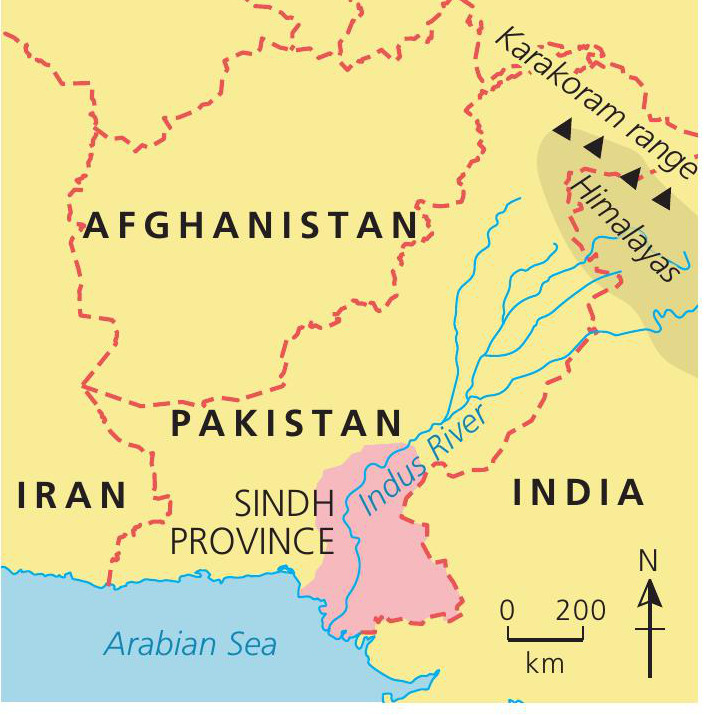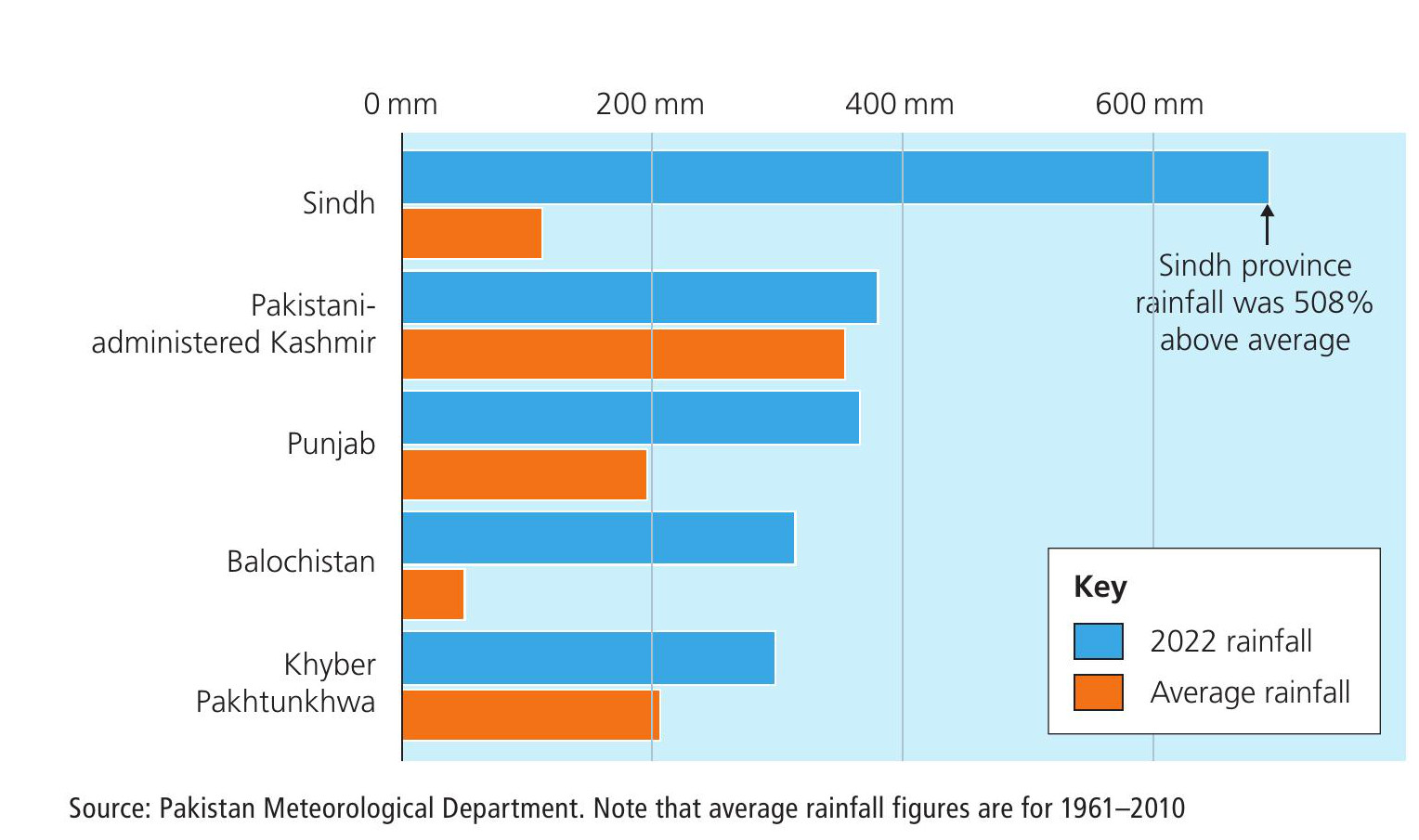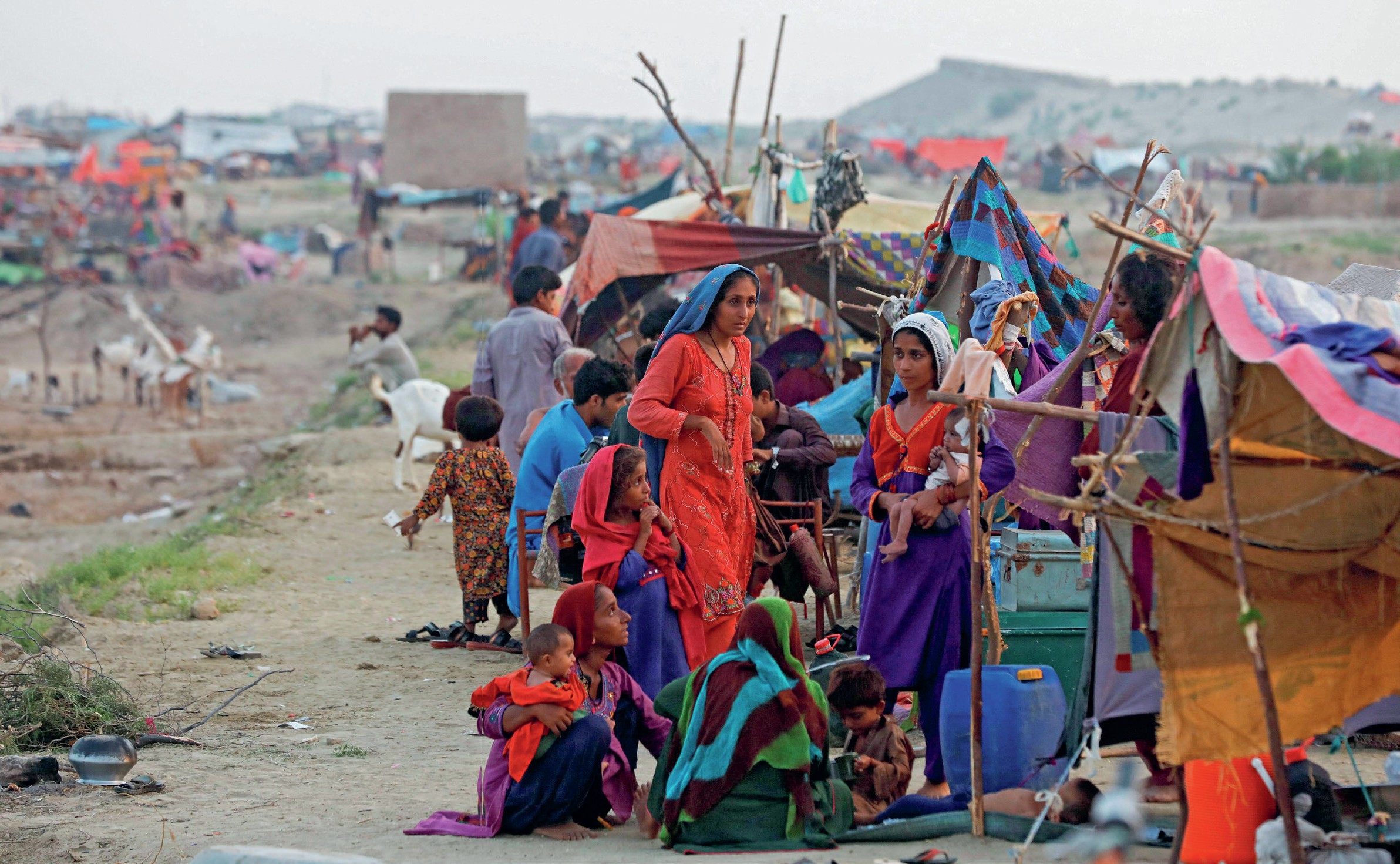case study
The 2022 Pakistan floods
Climate change and extreme weather
GCSE geography specifications require you to understand the links between climate change and extreme weather events. This article looks at the 2022 floods in Pakistan as a case study.

Scientists believe that the 2022 floods in Pakistan, which displaced more than 30 million people, are linked to climate change, with some areas having three times the usual amount of rainfall following a period of extremely high temperatures. It is a fact that countries which contribute the least carbon dioxide emissions are often most affected by climate change. While Pakistan contributes only 0.7% of global greenhouse gases it is the eighth most vulnerable country in the world to the effects of climate change.

In August and September 2022, Pakistan was hit by major floods causing thousands of deaths, injury, disease and homelessness. The pictures on our screens at that time showed the misery and devastation caused by the floods. At least 1,700 people were killed, of whom 600 were children. Land was submerged by floodwater for many months, leading to widespread disease and malnutrition.
Again, children were the most badly affected. Millions lost their homes in the flood and became homeless.
Figure 2 shows that all areas of Pakistan had more rainfall than usual in 2022, but that Sindh Province was particularly badly hit, with more than five times the usual amount of rain. Sindh Province is important for its agricultural output, producing rice, cotton, and sugarcane.

What caused the floods?
A large proportion of Pakistan’s population live close to the Indus river, the discharge of which is fed by the summer melt of the glaciers of the Himalayan and Karakoram mountains. In addition, the annual monsoon brings heavy rainfall between July and September. Over 70% of the country’s rain is brought by the monsoon. Rivers flood every year but sometimes the floods are particularly bad, and 2022 saw some of the worst floods ever experienced. At times 17,000 cumecs of water were flowing in the Indus river, about three times its usual discharge, and one third of Pakistan was under water, with a 100-kilometre long lake forming in the Sindh Province.
A number of factors contributed to the severity of the floods, all of which are linked to climate change.
Average temperatures have risen by 0.7°C in South Asia since 1900, but in Pakistan over the past 30 years they have risen by about 0.3°C each decade, higher than the global average. Along with these long-term trends, there was a heatwave in the spring of 2022, with temperatures regularly exceeding 40°C. Temperatures even reached 51°C in Jacobabad, a city in the Sindh Province. Scientists think that climate change has made these heatwaves 30 times more likely to occur.
Each year between July and September heavy monsoon rains are brought by low-pressure systems that move over Pakistan. However, the 2022 heatwave meant the air rose more rapidly than usual, causing particularly low pressure. Warmer air can also hold more moisture (about 6% more for each 1°C rise), leading to heavier than normal rainfall. The 2022 monsoons were the country’s most severe since records began in 1961, with three times the average annual rainfall across the country.
Another consequence of the heatwave was that glaciers in the Himalayas and Karakoram mountains melted more rapidly, and Pakistan has 7,000 glaciers in its northern regions. This meant there was more glacial meltwater in the rivers and also that there were three times more glacial lake outbursts than usual.
■ Scientists also think that a weather phenomenon called La Nina contributed to increased rainfall in Pakistan. La Nina causes surface cooling of the Pacific Ocean west of South America and alters wind patterns, pushing more warm water towards Asia, and this increases rainfall. La Nina usually occurs in cycles and lasts for 2 years, but in 2022 it lasted into a third year. Scientists are still exploring whether climate change led to the 2022 La Nina.
The heavy monsoon rain together with the glacial melt water led to vast amounts of water in the rivers, filling the tributaries which flow into the Indus causing widespread flooding.
Immediate impacts of the floods
Social
■ 1,700 people died, including 600 children
■ 33 million people were affected, 15 million of these in Sindh Province
■ 1,000 health facilities damaged in Sindh
■ 1.8 million homes across Pakistan were damaged and many were destroyed. Mud brick homes were particularly vulnerable
■ Increase in incidence of disease, especially diarrhoea, dengue fever, malaria and typhoid
■ 50% of sanitation and hygiene facilities destroyed in Sindh
■ Mental health, especially of women, suffered due to lack of toilet facilities
■ 22,000 schools were damaged or destroyed

Economic
■ Infrastructure damaged, including 150 bridges and 3,500 roads, and no electricity for more than 10 days
■ 700,000 livestock killed
■ 3.6 million acres of crops destroyed, particularly rice and sugar cane in Sindh
■ Food insecurity
The last extreme flooding event was in 2010, affecting about one million people. After these floods there were plans to improve flood warning systems, but five changes of government since then has made it hard to implement the plans and the country’s flood warning and disaster management systems are still not very effective.
In 2022, four times more land was flooded and twice as many people were affected. It has been suggested that human activity exacerbated the effects of the flood. A large number of people live in poverty and there has been long-term urbanisation in areas at risk of flooding, particularly in the Sindh Province, where 52% of people live in urban areas, which means there is more rapid surface runoff.
Longer-term impacts of the floods
Many people were affected by the 2022 floods and the country has seen significant economic losses, including severe impacts on agricultural output. In addition, there are major concerns about long-term malnutrition and ill health from waterborne diseases, and the United Nations has suggested that the death toll from these could be higher than the deaths from the flood itself.
Despite huge amounts of emergency aid including food and sanitation supplies, most farmers have been unable to plant the food crops which were due to be harvested in 2023, meaning families will have to rely on international aid and food will have to be imported throughout the year.
Pakistan is the fourth-largest exporter of rice in the world, and the huge loss of rice has had global consequences, causing shortages and price increases, particularly in countries such as Indonesia and Benin, which rely on rice imports from Asia.

Conclusion
During the last 20 years, there has been a significant fall in the amount of poverty in Pakistan, linked to the move from farming to secondary and tertiary industries and to successful social welfare projects. However, 43% of the population is still employed in agriculture and many people earn less than £2.70 per day. Even before the floods the country was facing a growing economic crisis caused by multiple factors including rapidly rising prices for imported goods, many years of high spending on the military, not generating enough money through taxes and a major reliance on big loans from other countries which it hasn’t been able to repay. Consequently the floods were truly a disaster for Pakistan.
Glossary
Glacial lake outburst When glaciers melt, water builds up in lakes in front of the ice, trapped by sediment (moraine) previously deposited by the glacier. These lakes may burst if, for example, the lake gets too large to be supported by the moraine.
Heatwave A heatwave is an extended period of much hotter weather than usual.
Low-pressure system When a large area of air is rising, cooling and condensing, bringing rainfall.
Exam practice
For an extreme weather event you have studied, assess whether the social impacts were greater than the environmental impacts. (8 marks)





